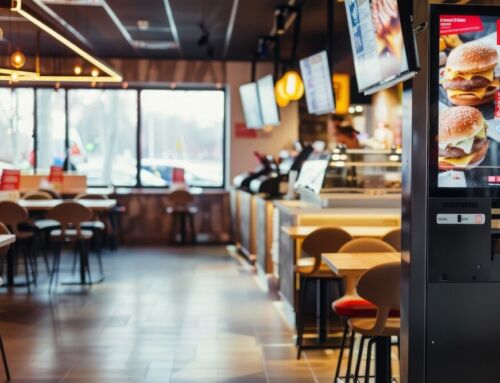One of the classic errors businesses make with new technology is putting all their focus on the onboarding phase and expecting results to automatically follow. The underlying assumption here is that the simple act of adopting tech is sufficient to transform and improve operations.
But it’s not technology per se that brings results. It’s how it is used, and how it is used over time. To get the best results, you need a strategy for ensuring optimum performance over time.
As kiosk vendors, we always emphasise to our customers the importance of ongoing performance monitoring and maintenance. Any uplift you get from the novelty of introducing self-service options for your customers soon fades away if, a few months in, the consoles start to behave clunkily and erratically. Plus, user needs and expectations change over time. You’ve always got to be on the lookout for opportunities to tweak and improve the user experience.
Here are five key areas to focus on for optimising kiosk performance.
Uptime and Availability
If you want to optimise the performance of your kiosks, you need to start by making sure they’re functioning in the first place. Downtime is kryptonite to all your best kiosk intentions. It directly translates to lost customer opportunities and frustration, taking a wrecking ball to sales figures and satisfaction levels. Having backup network and power options is crucial to avoiding whole system failures.
Proactive maintenance
An individual unit or entire system going down might be the worst case scenario for kiosk performance. But it’s just as important to pay attention to all the little glitches that can occur, or even those occasions when a system is simply not working to its full capabilities.
Performance monitoring and proactive servicing and maintenance regimes are the key to preventing small glitches from evolving into major disasters. Both should be stuck too religiously. This is where getting the right SLAs from your technical support partner comes into its own. You don’t just want a guarantee that they will respond to a ticket in hours rather than days. You want to know that they provide continuous monitoring and routine check-ups to keep your kiosks in tip top condition.
User Feedback
System monitoring is one great weapon you have in the quest for optimum kiosk performance. Another is the people who use them. We dedicated a previous blog to the virtues of having customer feedback capabilities built into your kiosks. If technical data doesn’t identify a glitch, someone using the kiosk will. Having a way for them to report issues therefore helps with speedy resolutions
But beyond that, user feedback is also a great way to gather insights into the overall user experience. Even if a system is sound technically, there could be things about it that customers don’t like or think could be improved. Ultimately, optimum performance is about delivering an optimum experience. And there’s no better way to gather intelligence on how to achieve that than from users themselves.
Content Management
Sticking with the theme of UX, sound technical performance of course underpins the quality of experience kiosk users get. But it also depends very much on what’s on the screen before them, or the content.
The same rules apply here as they do to web and all other types of digital and marketing content. You want what’s on the screens to be engaging, user friendly, easy to navigate, relevant and accurate. It also needs to be fresh and up to date. Kiosk content must be updated regularly to reflect promotions, seasonal changes, or new offerings.
Security
Finally, it’s important to remember that kiosks are connected digital devices. And as such, they are vulnerable to the same cybersecurity threats as all connected digital devices. Malware, hacks, data breaches and all the rest can not only cause severe performance issues, they can lead to direct losses and land you in hot water over privacy protections. Robust security protocols and regular updates have to be part and parcel of any performance management regime.




